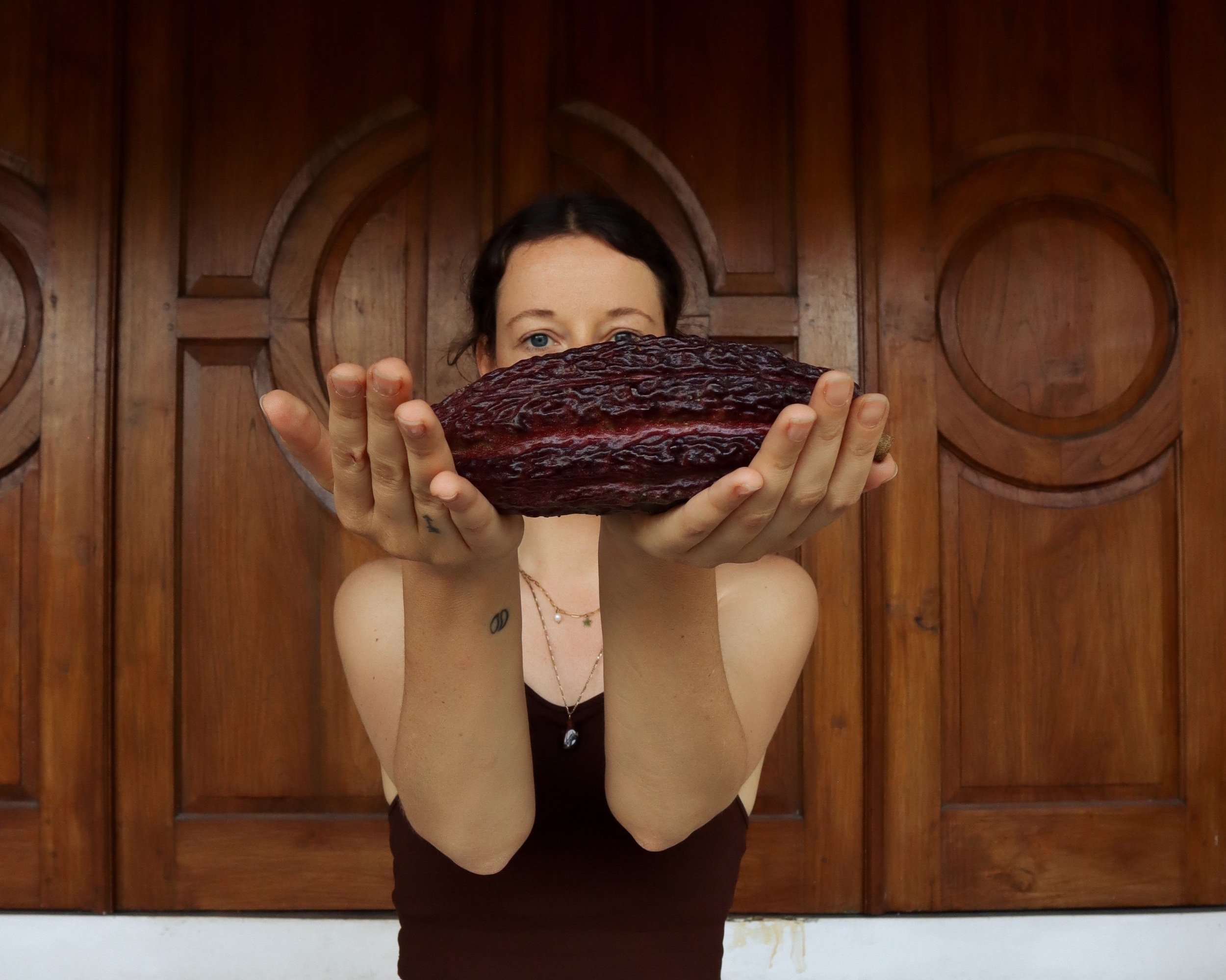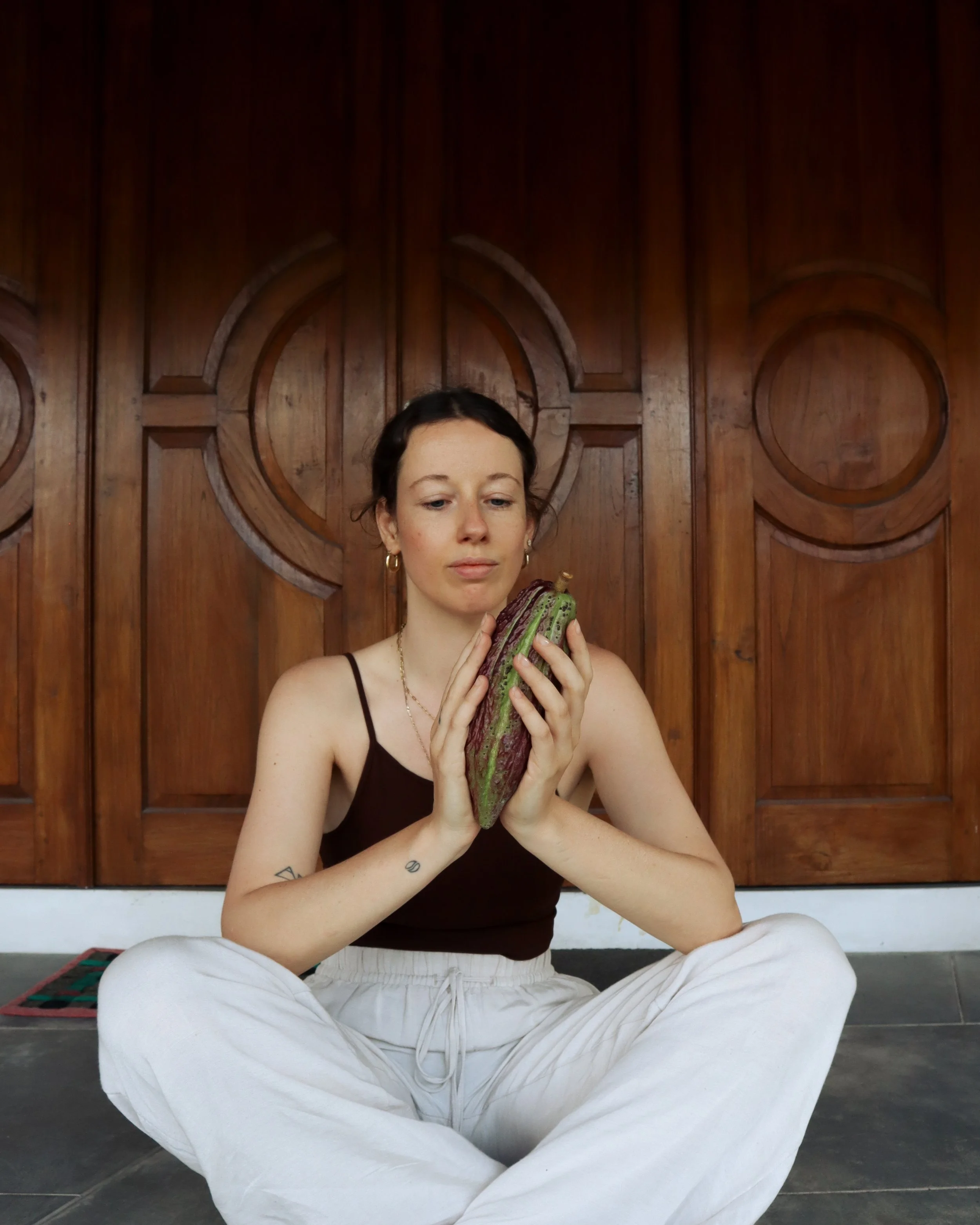What Is Ceremonial Cacao & My Favorite Recipe🤎
What Is Ceremonial Cacao?
Let me start by saying that defining ceremonial cacao can be a bit tricky. The term isn’t protected, and there’s still a lot of discussion about what truly qualifies as “ceremonial.” I don’t claim to have all the answers, but I’ve been curious about it myself. That’s why I did some research and decided to write this blogpost to share what I’ve learned.
Ceremonial cacao, sometimes also called raw cacao, is a pure and minimally processed form of cacao. From what I understand, true ceremonial cacao is sourced from farms with a connection to ancient Mesoamerican cultures, such as the Olmecs, Mayans and Aztecs. There are often specific guidelines around how it’s grown, harvested, and processed. However, with the growing popularity of cacao, it’s hard to know for sure if these practices are always followed.
Unlike the world of specialty coffee—where quality is clearly defined by the Specialty Coffee Association with a scoring system (coffee must score 80 points or more out of 100 to be considered “specialty”)—there’s currently no universally accepted standard for ceremonial cacao.
What most people agree on is this: ceremonial cacao is made from 100% pure cacao paste using whole cacao beans. It has no added ingredients, is often only lightly roasted, and is processed as little as possible to preserve its natural properties and energetic qualities.
What I’ve also learned is that ceremonial cacao is typically sourced from fine-flavor heirloom strains like Criollo or Trinitario, grown by small or indigenous farms using organic or agroforestry methods. These practices help protect biodiversity and support fair trade. This aspect of sourcing is a big part of what sets ceremonial cacao apart.
Equally important is the intention and reverence behind how the cacao is handled. Many farms and producers who work with ceremonial cacao see it as a sacred plant. Ceremonies and prayers are often part of the harvest and preparation process, honoring the ancestral traditions and cultivating a deep connection with the land. Transparency and respect are core values in the journey from seed to sip.
From Cacao Bean to Cup of Cacao
I've always been fascinated by the journey from plant to cup, whether it’s coffee, tea, or now cacao. After years of diving deep into the world of specialty coffee, I naturally started to notice the many beautiful similarities between coffee and cacao. Both have deep cultural roots, require careful processing, and offer a rich sensory experience.
The cacao tree, scientifically known as Theobroma cacao, translates to "food of the gods" in Greek. It’s native to the tropical regions of the Americas, especially the upper Amazon basin in what is now Peru, Ecuador, Colombia, and Brazil. Cacao was domesticated and revered by ancient Mesoamerican civilizations like the Olmecs, Mayans, and Aztecs, who used it in both daily life and ritual.
From Seed to Tree 🌱
Cacao begins with a seed planted in the soil. It sprouts quickly, and the seedling is usually nurtured in a nursery until it’s strong enough to be planted on the farm. Cacao trees often grow in biodiverse environments, surrounded by other plants and trees that provide shade and support the ecosystem.
While the tree produces many small flowers, only a few develop into cacao pods. These colorful, textured fruits grow directly on the trunk and branches. Inside each pod are cacao beans surrounded by a white, fruity pulp that’s sweet and edible right out of the pod.
It takes around six months for a cacao pod to ripen, and it takes experience to recognize when they’re ready to harvest. Harvesting is done by hand, and the beans are removed from the pods along with the pulp.
Fermentation and Drying
Once harvested, the beans begin their transformation. First, they are fermented with the pulp still intact. The sugars and juices from the pulp are essential to the fermentation process, which develops the flavor and reduces bitterness. This step is somewhat comparable to the “natural process” used in coffee.
After fermentation, the beans are spread out to dry in the sun for about a week. They are turned regularly to ensure even drying and to prevent mold or spoilage. When fully dry, the beans are sorted by hand to remove debris and defective beans, then stored in jute bags for transport or further processing.
Roasting and Grinding
Traditionally, cacao beans are roasted over an open fire on a clay comal. In more modern settings, ovens or adapted coffee roasters can be used. After lightly roasting, the outer husk of the bean is removed, revealing the cacao nibs.
These nibs are then ground into a thick, rich paste. For ceremonial cacao this is done by hand. Now you have 100% pure cacao—no sugar, no added ingredients. This paste is what’s used in ceremonial cacao: minimally processed, deeply nourishing, and made with care and intention.
If you're curious to see this process in action, there are some great videos online. Just keep in mind that most show the production of factory chocolate, which differs from the small-scale, intentional crafting of ceremonial cacao.
Honor & Respect: Borrowed Rituals
My journey with working mindfully with plant-based products began in specialty coffee, where I spent over eight years behind the bar. One of the first and most important lessons I learned as a barista was to treat the product — from bean to cup — with honor and respect. Even though I no longer work in coffee professionally, I’m still deeply grateful for the teachers who passed this awareness on to me.
In those years, I came to understand how much effort goes into every cup — from the farmers and roasters to the baristas serving it. When I started training new baristas, I always made sure they understood this too: coffee is not just a drink, it’s the result of a long, collaborative process. To this day, if I walk into a café and the barista doesn’t know what’s on the grinder, I quietly walk out.
This deep respect for origin and process naturally came with me when I began working with herbs, spices, and ceremonial cacao. My training in Core Shamanism taught me even more — not just how to work with the plants and the spirits, but how to truly honor them. To approach them with presence. With reverence.
So whether I’m making a cup of cacao for myself, sharing it with a friend, or holding a full ceremony, I treat it as a sacred moment. These rituals may be borrowed, but the respect is real.
In another blogpost I will tell you more about cacao ceremonies, how to create your own ceremony and work with cacao in a respectful way.
My Favorite Cacao Recipe 🦋
Over time, I’ve fallen in love with combining ceremonial cacao with soft, feminine herbs like lavender and rose. After much experimenting and fine-tuning, this has become my go-to blend — it’s the only cacao I now prepare, drink, and share.
Ceremonial Cacao with Lavender & Rose – for 1 cup (approx. 180ml)
Ingredients:
180ml warm water (around 80°C)
1 tsp organic lavender
1 dried organic rosebud
15–20g ceremonial cacao
Ground cinnamon & cardamom (to taste)
Pinch of salt (optional)
Agave or other natural sweetener (optional)
Preparation:
Create the herbal infusion:
Add the lavender and rosebud to a cup or small jug, then pour over the warm water. For a deeper, more aromatic infusion, prepare this the day before and let it steep overnight in the fridge. A same-day infusion works beautifully too — it will simply taste more delicate.Strain the infusion:
Once steeped, strain the herbs using a tea strainer or filter to remove the petals.Warm the infusion:
Pour the infused water into a small saucepan and gently heat it.Melt the cacao:
When the infusion reaches around 60°C, add your ceremonial cacao (15–20g depending on your intention and the day). Stir slowly and lovingly until the cacao is fully melted and absorbed into the liquid.Add spices:
Stir in cinnamon and cardamom to taste. If you feel called, add a tiny pinch of salt to enhance the flavors.Sweeten (if desired):
If you prefer your cacao a little sweeter, add a touch of agave or your favorite natural sweetener.Connect with the Spirit of Cacao:
As you prepare your cacao, take a moment to connect with its Spirit. You might stir with intention, hum a melody, whisper a blessing, or simply hold a feeling of gratitude in your heart. Let this be a sacred moment.Pour & enjoy:
Serve in your favorite cup, take a deep breath, and enjoy this heart-opening, soul-soothing drink.
GIVEAWAY! (CLOSED!)
Win a ceremonial cacao heart from my favorite brand: Purekakaw 🤎
To celebrate the heart of Summer, I’m giving away one of my favorite cacao hearts — perfect for your own nourishing ritual.
Here’s how to join:
Follow me on Instagram
Be subscribed to my newsletter
Click the button below and fill in the short form — you can also subscribe through the form if you're not on the list yet!




